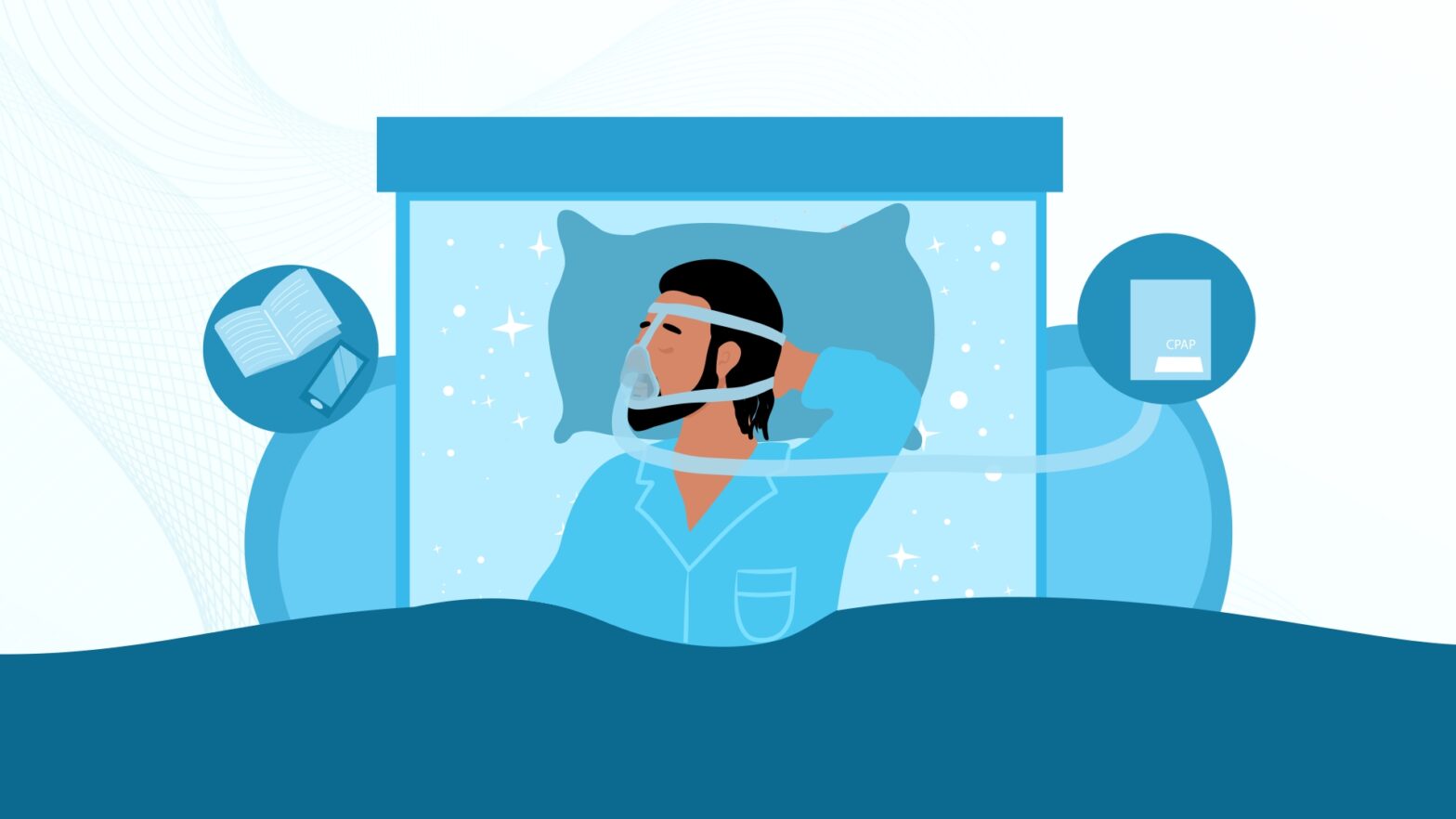
CPAP and BiPAP machines help people suffering from Obstructive Sleep Apnea (OSA) get good sleep. CPAP is the most commonly used machine whereas BiPAP finds use in more severe cases of sleep apnea or Chronic Obstructive Pulmonary Disease (COPD). BiPAP treats central sleep apnea where the brain temporarily ceases to send breathing signals to the respiratory muscles.
In CPAP, the pressure is kept constant throughout the person’s breathing cycle but in BiPAP, inhalation happens at high pressure and exhalation at lower pressure. Both machines look the same with a face mask and tubing but differs in how it helps patients with different sleep apnea conditions.
| CPAP | BiPAP |
| Normal OSA and snoring. | Severe OSA, COPD, neuromuscular disorders, etc. |
| Constant flow of pressurised room air. | Two levels of pressurised room air (higher for inhalation and lower for exhalation). |
| Limited options for pressure adjustment. | Flexible pressure adjustment options. |
| Could be uncomfortable due to fixed pressure. | Could be more comfortable, especially for those with exhalation issues. |
| Costs between ₹25,000 to ₹60,000 for a machine. | Costs between ₹40,000 to 1 Lakh for a machine. |
Also Read: How to Travel Smoothly With Your CPAP?
Both find use according to individual patient needs. CPAP is the generally preferred choice of treatment as most patients don’t require a BiPAP. For those who have issues with exhalation, the BiPAP machine helps by offering two different levels of air pressure, especially in cases such as obesity hypoventilation syndrome or certain neuromuscular disorders. Therefore, these decisions can be taken in consultation with your sleep medicine doctor.
There are two types. Firstly, the regular CPAP delivers constant air pressure throughout the night. Secondly, the other is auto-adjusting CPAP that varies throughout the night based on the patient’s breathing patterns.
Newer machines come with additional features such as heated humidifiers that blow warm, moist air into airways to reduce nasal dryness.
They deliver air at different pressure levels for inhalation and exhalation. There are two types: fixed-level and auto-adjusting.
In fixed-level, pre-determined IPAP and EPAP settings are programmed into the machine and don’t change throughout sleep. However, when auto-adjusting, the machine automatically delivers varying EPAP and IPAP levels to accommodate different breathing patterns. It has special modes such as Spontaneous (S), Spontaneous/Timed (S/T) and Timed (T).
Therefore, use the machines only after consulting with a sleep medicine doctor.
Sleep Therapeutics is the first niche sleep medicine center in Telangana and Andhra Pradesh. If you observe symptoms of sleep apnea, our sleep experts are always ready to help you find solutions.